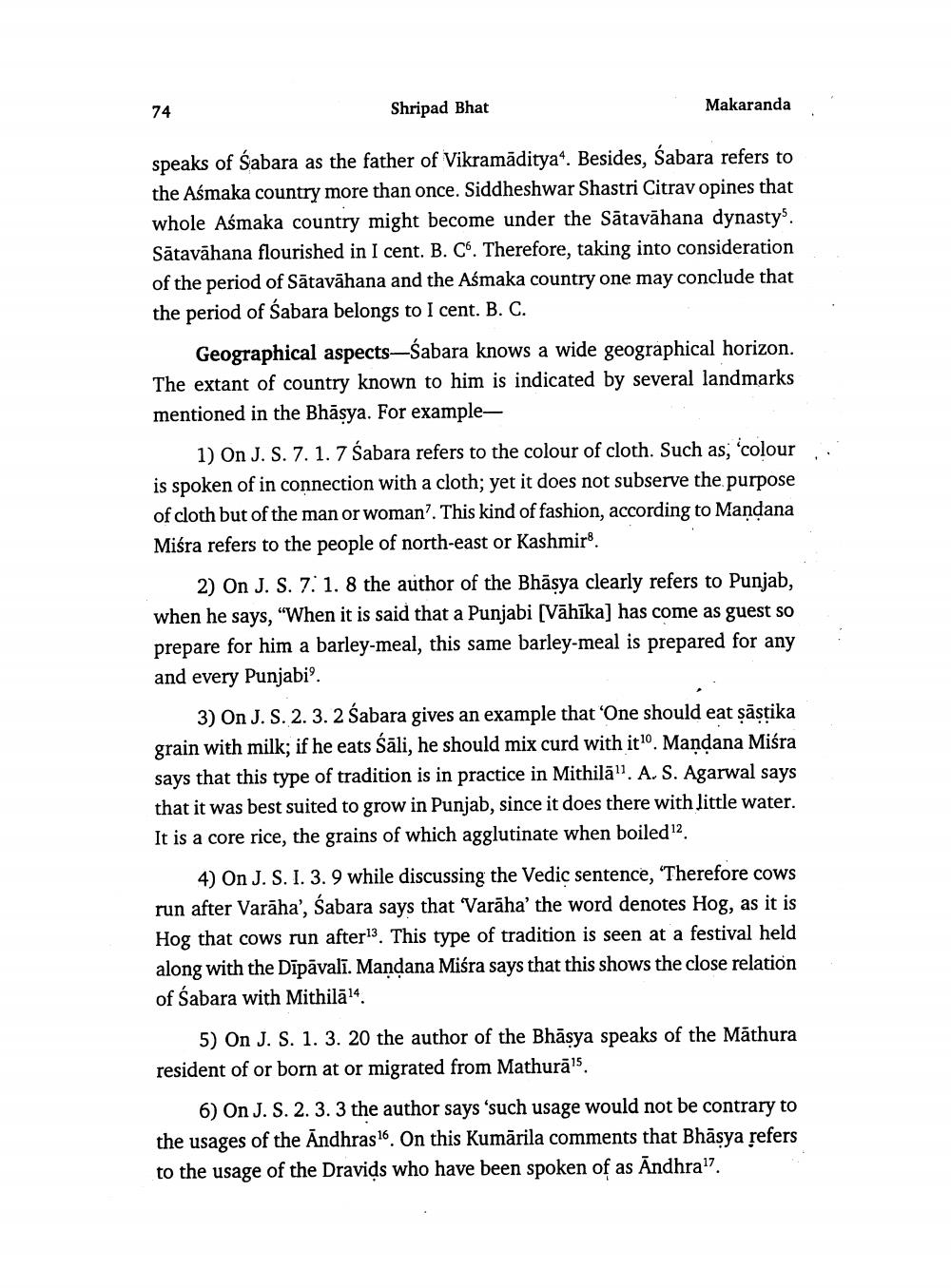________________
74
Shripad Bhat
Makaranda
speaks of Sabara as the father of Vikramaditya4. Besides, Sabara refers to the Aśmaka country more than once. Siddheshwar Shastri Citrav opines that whole Aśmaka country might become under the Sātavāhana dynasty". Sātavāhana flourished in I cent. B. C6. Therefore, taking into consideration of the period of Sātavāhana and the Aśmaka country one may conclude that the period of Sabara belongs to I cent. B. C.
Geographical aspects—Sabara knows a wide geographical horizon. The extant of country known to him is indicated by several landmarks mentioned in the Bhāsya. For example
1) On J. S. 7. 1. 7 Śabara refers to the colour of cloth. Such as, 'colour is spoken of in connection with a cloth; yet it does not subserve the purpose of cloth but of the man or woman?. This kind of fashion, according to Mandana Miśra refers to the people of north-east or Kashmir.
2) On J. S. 7. 1. 8 the author of the Bhāsya clearly refers to Punjab, when he says, “When it is said that a Punjabi [Vāhīka) has come as guest so prepare for him a barley-meal, this same barley-meal is prepared for any and every Punjabio.
3) On J. S. 2. 3.2 Śabara gives an example that 'One should eat şāstika grain with milk; if he eats sāli, he should mix curd with it10. Mandana Miśra says that this type of tradition is in practice in Mithilā". A. S. Agarwal says that it was best suited to grow in Punjab, since it does there with little water. It is a core rice, the grains of which agglutinate when boiled12.
4) On J. S. I. 3. 9 while discussing the Vedic sentence, Therefore cows run after Varāha', Sabara says that Varāha’ the word denotes Hog, as it is Hog that cows run after13. This type of tradition is seen at a festival held along with the Dīpāvalī. Mandana Miśra says that this shows the close relation of Sabara with Mithilā24.
5) On J. S. 1. 3. 20 the author of the Bhāsya speaks of the Mathura resident of or born at or migrated from Mathurā's.
6) On J. S. 2. 3. 3 the author says 'such usage would not be contrary to the usages of the Andhras 16. On this Kumārila comments that Bhāsya refers to the usage of the Dravids who have been spoken of as Andhra".




